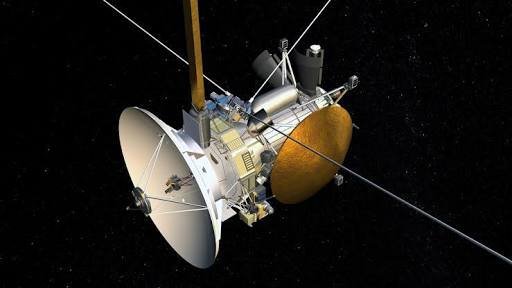
After a 20-year stint, Cassini's space research vehicle will end its mission with harakiri, dropped into Saturn's atmosphere and burned to the ground. Cassini's mission produces thousands of scientific and megadata reports from the ringed planet in the solar system.
The space research vehicle "Cassini" is ready to cross 22 times between Saturn and its ring (26/04). After sending the final data to NASA, September 2017 Cassini is controlled to throw himself into the atmosphere of Saturn. Thus the aircraft officially ended its mission since it was launched in 1997 and arrived in the orbit of Saturn in 2004.
there's never been a space rides flying through this unique territory, NASA manager Thomas Zurbuchen said. "What we will learn from how 'Cassini' traverses this orbit will increase our understanding of how planets and planet systems are formed.The aircraft reveals various phenomena in space until the end of its life.
About 2,400 kilometers distance separates the planet Saturn and its ring. "Based on the model, we hope that the distance is free of the particles that could potentially damage the transmission of the spacecraft," said NASA manager Earl Maize. "There are some unknowns, but that's one of the reasons why we made bold research until the end of Cassini's mission"
In the last 20 years, "Cassini" has perpetuated spectacular images. Photographs of spacecraft recorded show a whirlwind of a storm on the north pole of the ringed planet. Measured by the standard terrestrial storm, the eye of this Saturn storm is about 2000 kilometers in diameter. Clouds on the outer edges move at speeds of over 540 kilometers per hour.
Observe it carefully: Photos taken with the wide-angle lens camera of the Cassini drone aircraft also show Earth-looks so small deep in space. The distance of Saturn to our Earth is about 1.44 billion km. On the outside of Saturn can be seen ring.
From hot to cold: These colors show an unusual temperature distribution in Saturn's orbiting moons: Mimas and Tethys. This data was obtained with infrared camera "Cassini".
Cassini "has also collected data on Enceladus one of Saturn's moons, which have a sea in liquid form beneath the ice covering it.For scientists, this is an indication of energy production, theoretically, Enceladus has the potential to support life.
Also part of the sensational discovery of the space research spacecraft "Cassini" is: the liquid methane lake in Titan, Saturn's largest satellite. This moon was discovered in 1655 by Dutch astronomers. In this century, the findings are very interesting. Over ten years Cassini has been researching Titan.
